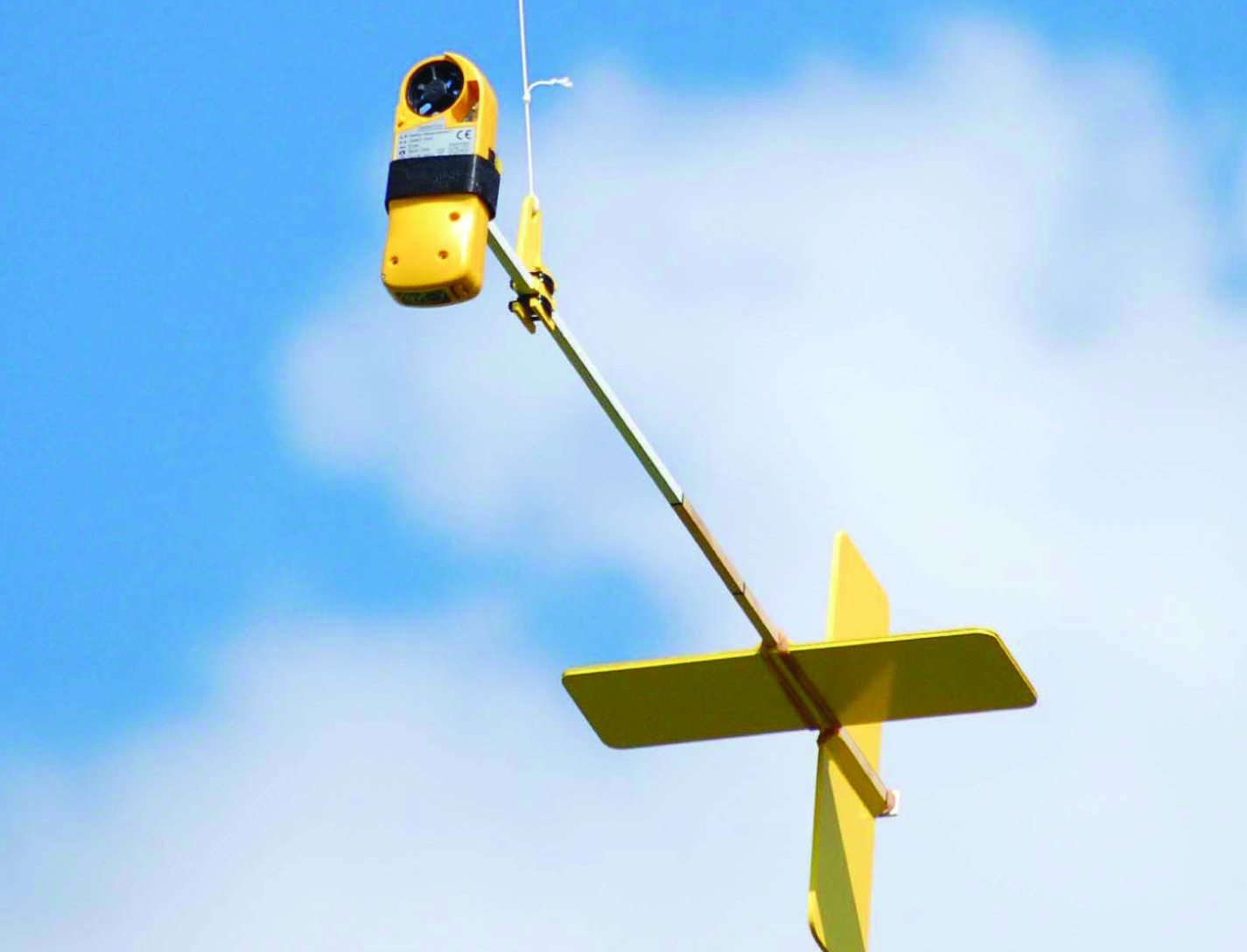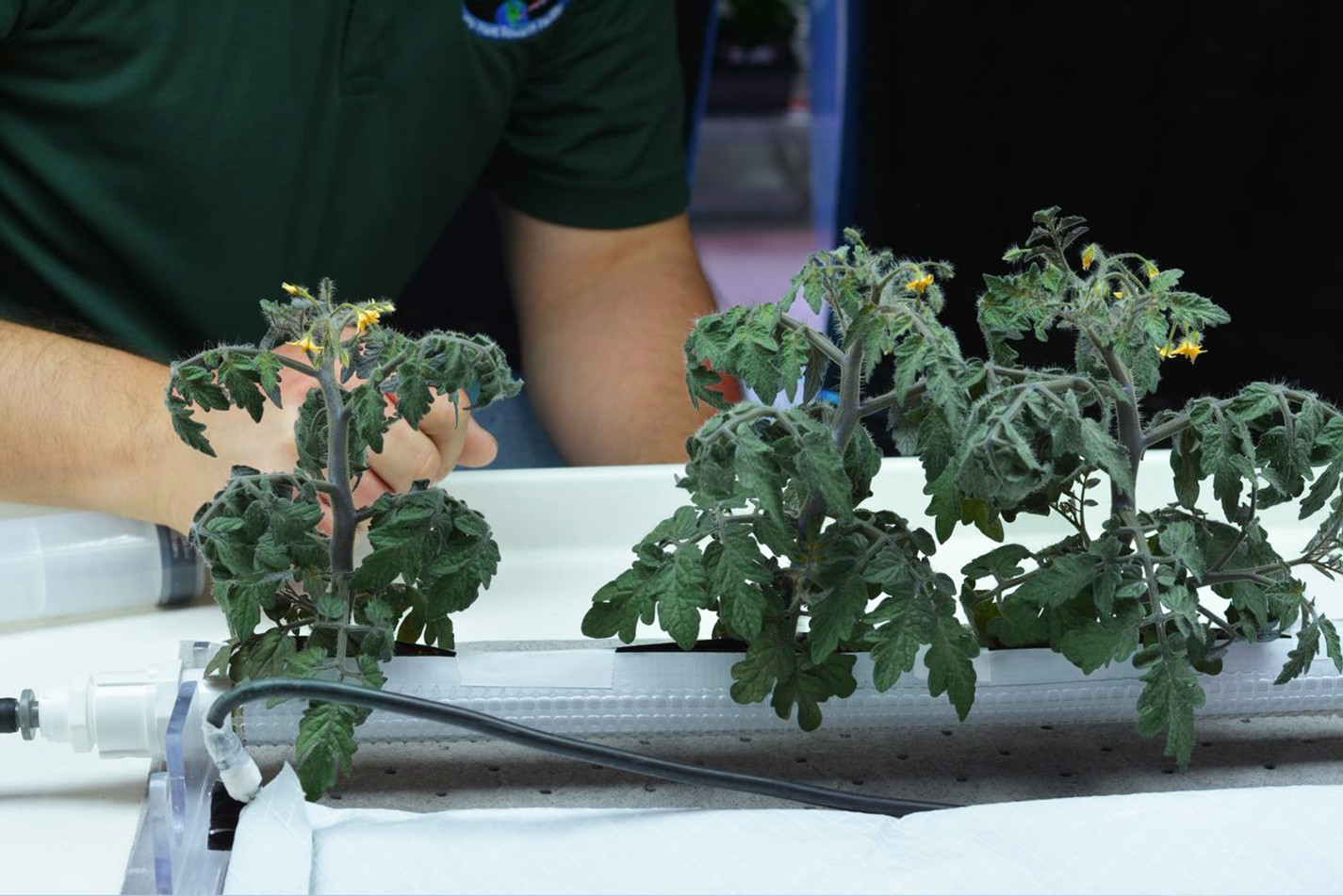Just as agriculture extends beyond farming, NASA technology extends beyond space. Though agriculture and space may appear as unrelated disciplines, the technologies each uses can overlap. NASA’s space technology often finds applications on Earth – whether in the water we use, monitoring and mapping vegetation from the air, or growing vertical greens. By bringing space technologies to Earth applications, NASA provides cheaper, simpler, and more efficient solutions than current options. Listed below are four examples of NASA technology poised for utilization in agriculture.
Endurance and Range Find New Heights with Small Compound-Wing VTOL 
Unmanned Aircraft Systems (UAS) tend to have difficulty flying in adverse environmental conditions, particularly gusty winds. For a time, the only options were small UAS, which can handle higher gust conditions but have limited endurance, or fixed-wing UAS, which may have good endurance but are not wind-robust and need large open areas for launch and recovery. The Small Compound-Wing VTOL (Vertical Take Off and Landing) negates both prior options’ limitations by offering longer endurance, better stability, higher forward speeds, and lower cost. This is achieved with a novel three-segment wing design, consisting of a fixed inner segment mounted to the fuselage, a controlled and articulating intermediate piece to which lift engines are attached, and a free-to-rotate outer segment that reduces gust impacts on the airframe. The Small Compound-Wing VTOL can apply in agriculture, pipeline management, utility monitoring and inspection, defense missions, precision aerial mapping, and use by first responders or law enforcement.
Steady and Damp Low-Altitude Payloads for Less with the AeroPod
Traditional methods for suspending equipment from kites or blimps are complex to construct and have various moving parts. The AeroPod provides a solution, using aerodynamic forces to stabilize instrument packages suspended from a kite or tethered blimp. Its novel design includes using a tail boom and fin combination, which passively steadies and dampens payloads. The custom remote sensing platform craft is lightweight, low cost, simple to construct, has no moving parts, and can accommodate many different-sized instruments. The AeroPod is versatile in application across agricultural and environmental research purposes, such as urban pattern mapping, observing and documenting forest canopy, taking wetland studies, archaeological and geological mapping, and crop monitoring.
Effective Wastewater Treatment Recovers Ammonia For Fertilizer
Nitrogen pollution is a critical environmental issue that causes serious changes to aquatic ecosystems. Insufficient municipal water filtration processes allow nitrogen to seep into groundwater, and the typical ion-exchange resins usually used to treat ammonia are expensive and not as selective. NASA’s Ammonia Recovery System is a lower-cost solution that reduces ammonia concentrations in wastewater to less than one ppm. The ammonia that is captured can be reused as an environmentally friendly fertilizer. This technology can be used at various stages of water treatment systems and has a broad range of potential applications in numerous industries, particularly agricultural wastewater, chemical plants, and multi-unit housing complexes.
Plant power extends beyond Earth and is currently at work on the International Space Station. The Veggie Plant Growth System contains various technologies that allow plants to grow in microgravity. The system includes a Seed Delivery System, a Bungee Tool, a Microgreens Mower, and a Passive Porous Tube Nutrient Delivery System to plant, harvest, manipulate, and feed the plants with minimal intervention needed. These plants produce oxygen, control cabin humidity, can be consumed as food, and provide psychological benefits to space crews. The Veggie Plant Growth System’s effective and efficient plant maintenance technologies could see use in vertical farming and green walls.




